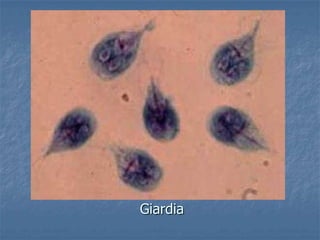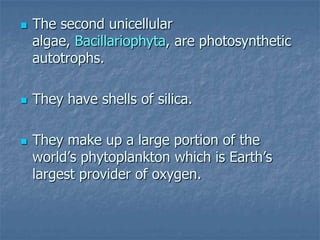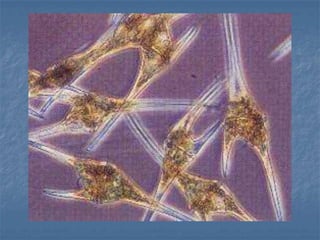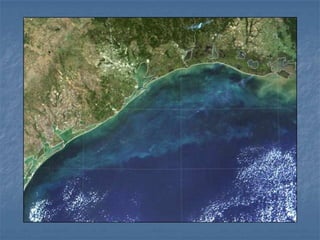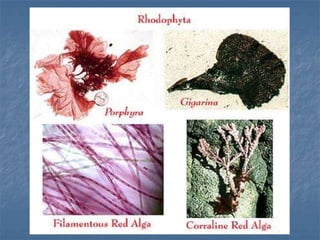The document discusses the Kingdom Protista. It describes protists as eukaryotic microorganisms that can be plant-like, animal-like, or fungus-like. Plant-like protists are algae that photosynthesize. Animal-like protists, called protozoa, are heterotrophs that ingest food and include amoebas and flagellates. Fungus-like protists include slime molds and water molds that decompose organic matter. The document provides examples and details on the characteristics and classifications of different protist phyla.










